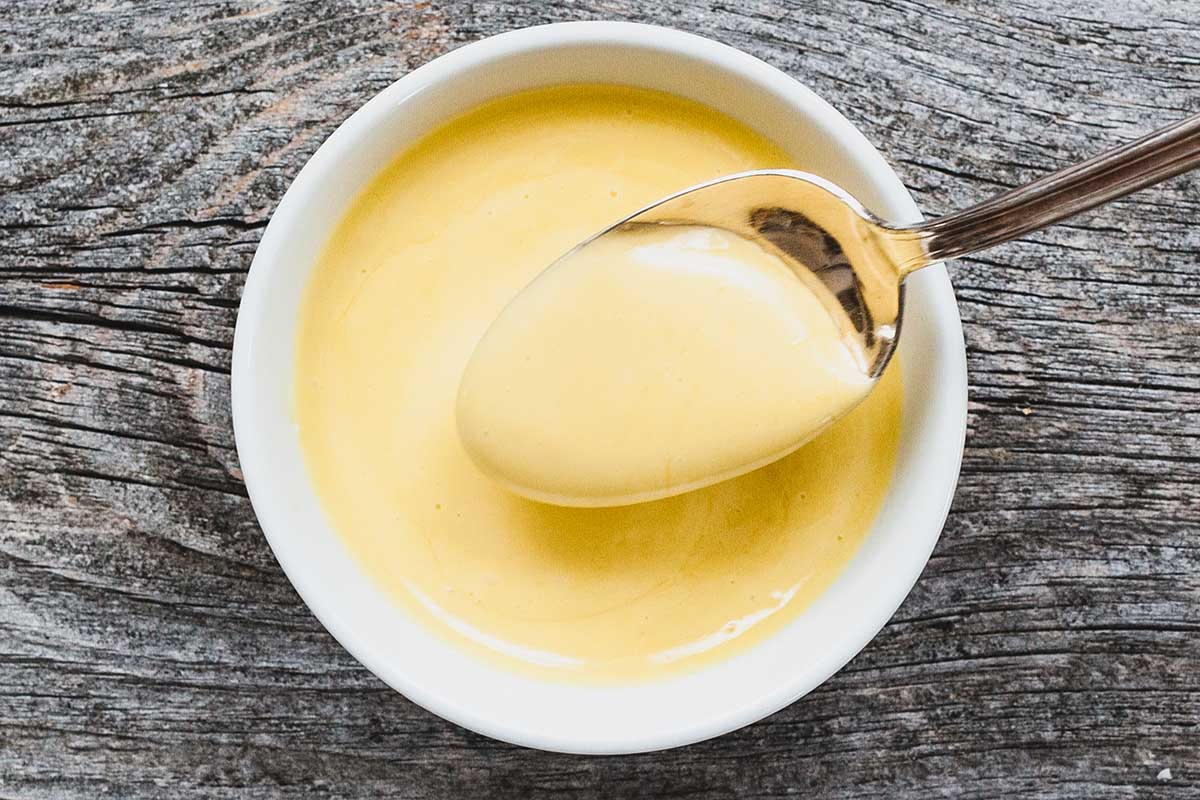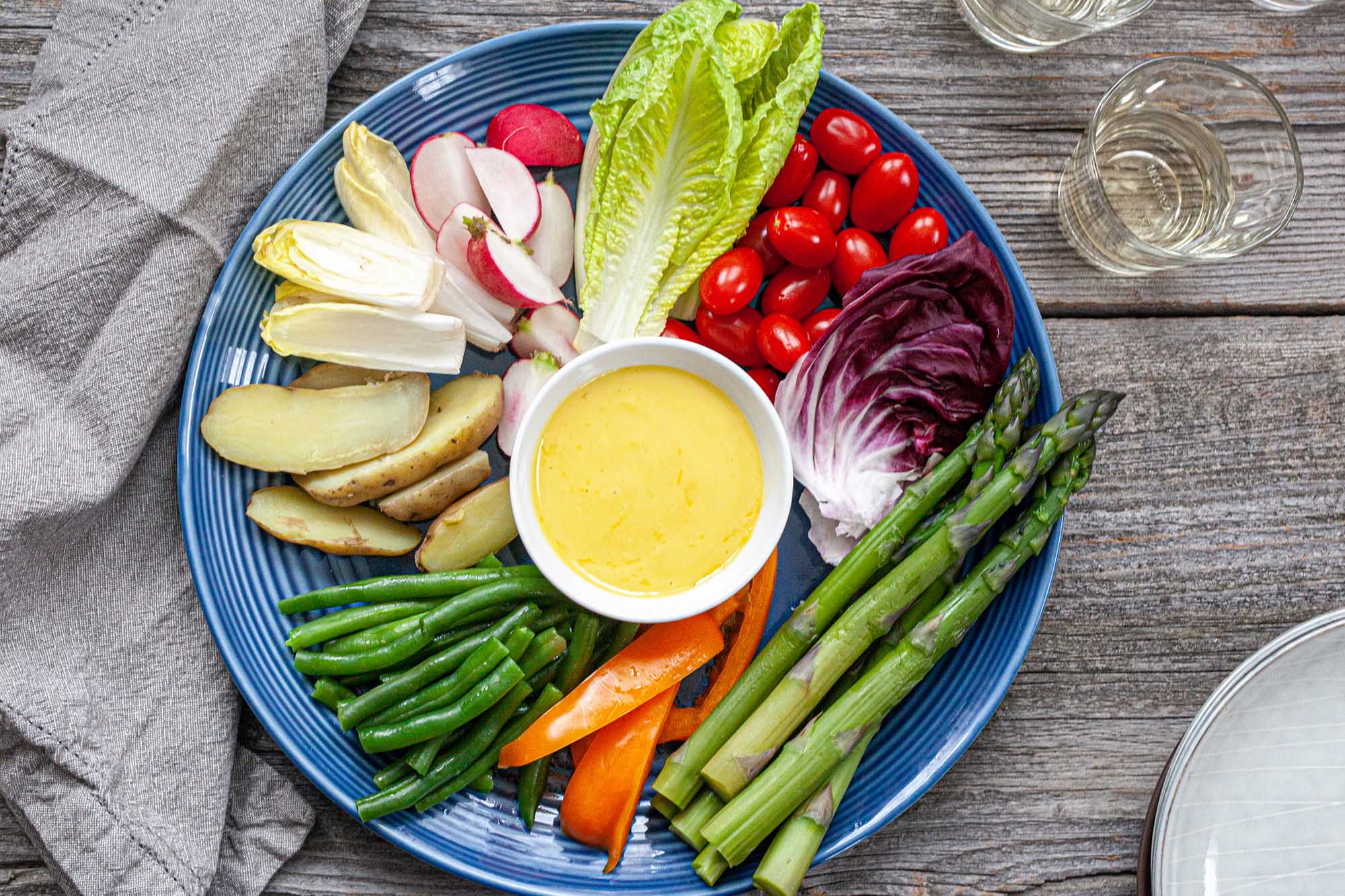Aioli is easy to make at home and serves as a garlicky, flavor-boosting accompaniment to vegetables, fish, BLTs, or fries. This mayo-like sauce is the extra special something you’ve been craving!
In the south of France, aioli—a creamy, rich, and intensely garlic-flavored, mayonnaise-like sauce—is typically served with platters of vegetables, spooned over fish, or swirled into bouillabaisse (fish soup).
It’s a no-brainer for the summer table. Drizzle it on an open-faced tomato sandwich, add it to a BLT, or dip your oven fries into it. This versatile sauce elevates even the most humble meal.
WHAT IS AIOLI?
Like mayonnaise, aioli is an emulsion. We all know oil and water don’t mix, but through the wizardry of kitchen science, liquid can be broken into many tiny droplets and forced to combine with oil.
With aioli, as with mayonnaise, this is achieved by very slowly whisking oil into an egg yolk mixed with lemon juice or a small amount of liquid. Start by adding just a few drops at a time, and then as the emulsion begins to coalesce, you can add a little more at a time. The key is to go slowly.


HOW MUCH GARLIC DO YOU NEED FOR AIOLI?
The hallmark of aioli is garlic. How much is up to you. I recommend adding only half at first, and taste to see if that’s enough. You can always add more, but you can’t remove it once added, and raw garlic can be powerful!
Mash the garlic into a smooth puree with coarse salt so you don’t end up with little chunks of garlic in the sauce; it permeates the sauce better, and it also looks more appealing. You can do this in one of two ways:
- Use a mortar and pestle.
- Scrape chopped garlic across a cutting board a few times with the flat of a large knife.
In both cases, coarse salt helps break down the garlic, and you need it to season the sauce anyway.
If you would like a sweeter, milder aioli, you could use roasted garlic. Just mash it as you would the raw garlic.
WHAT’S THE BEST OIL FOR AIOLI?
Traditional aioli is made with 100 percent olive oil. If your olive oil is very strong (slightly bitter, burns excessively at the back of your throat), you can cut it with a mild vegetable oil such as canola or grapeseed oil. Taste the olive oil before deciding.
HOW TO ADJUST THE CONSISTENCY OF AIOLI
Oil is what makes aioli thick. Add a little more if you want a thick sauce. If your aioli is too thick after adding the oil, just adjust the consistency by adding water or lemon juice a little at a time.


IS RAW EGG SAFE?
Personally, I am not afraid of using a raw egg yolk to make aioli or mayonnaise, especially if I know my eggs are fresh and from a reliable source, such as a small, local producer.
If you have concerns about raw eggs, you can purchase pasteurized eggs. Food scientist Harold McGee has developed a way of sterilizing eggs in the microwave, which he explains here.
HOW TO FIX A BROKEN AIOLI
If you’ve added the oil a little too quickly, the mixture can separate. Sometime you can save it simply by vigorously whisking it before adding any more oil.
But all is not lost if that doesn’t work. Simply place a new egg yolk in another bowl, whisk it with a little water, and then add the ‘broken’ aioli to the egg yolk bit by bit.
SWAPS AND SUBSTITUTIONS
The recipe below is for a straight-up basic garlic aioli, but there’s a wide world out there in aioli land! Here are few of my favorite tweaks/flavor additions.
- Make it mayonnaise: Hold the garlic and add lemon juice or vinegar for the acid ingredient. I love Dijon mustard (add about a teaspoon, or to taste.) Or stir in chopped chives, tarragon, parsley, or other herb of your choice. Here’s how to make Mayo in a Blender!
- Make it tartar sauce: Hold the garlic and stir in some chopped pickles, chopped capers, lemon juice, finely chopped onion or chives, chopped parsley, and a pinch of cayenne. Here’s a favorite Tartar Sauce recipe!
- Make it spicy: With or without the garlic, add a pinch of ancho chile powder (mildly hot), chipotle powder (smoky hot) sriracha, gochujang, or your favorite spicy condiment.
- Make it herby: With or without the garlic, stir in some pureed basil or cilantro for a green version. BLT’s, anyone?
- Make it pink: Stir in some pureed red peppers from a jar, or pureed sun-dried tomatoes.


HOW TO USE AIOLI
You’ve made a batch in 10 minutes; congratulations! Now what?
- Spoon it over vegetables. Spicy aioli is great on a baked sweet potato, lemony aioli on asparagus, garlic or basil aioli on thick tomato slices—either in a sandwich or by themselves.
- Use it as a creamy salad dressing to toss with greens or over a composed salad with hard-boiled eggs.
- Spoon it over poached eggs on toast.
- Spoon it over fish. A spicy aioli makes a nice contrast to salmon, and an herby aioli goes well spooned over just about any grilled fish.
- Add it to tacos. Cilantro or chipotle aioli over chicken or steak tacos is a winner.
- Make Mexican grilled corn: Make the aioli with lime juice instead of lemon juice, stir in pureed cilantro or chili powder, and slather it over grilled corn.

